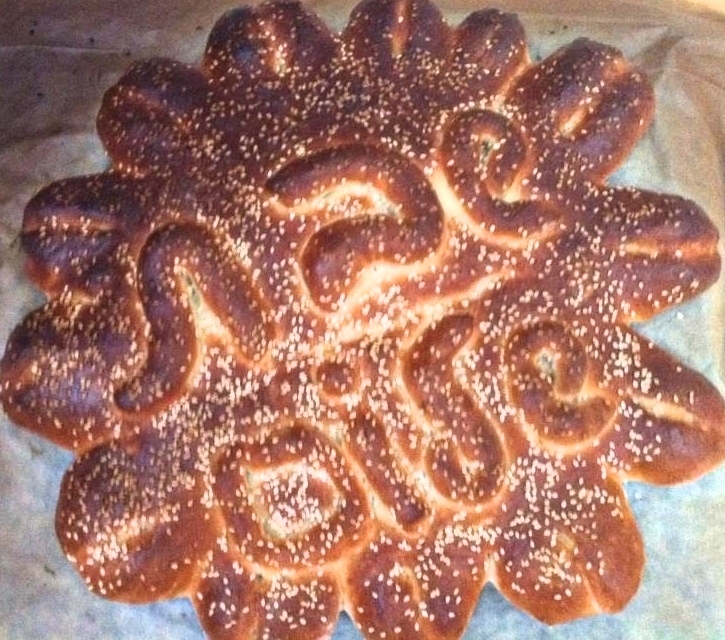Shabbat
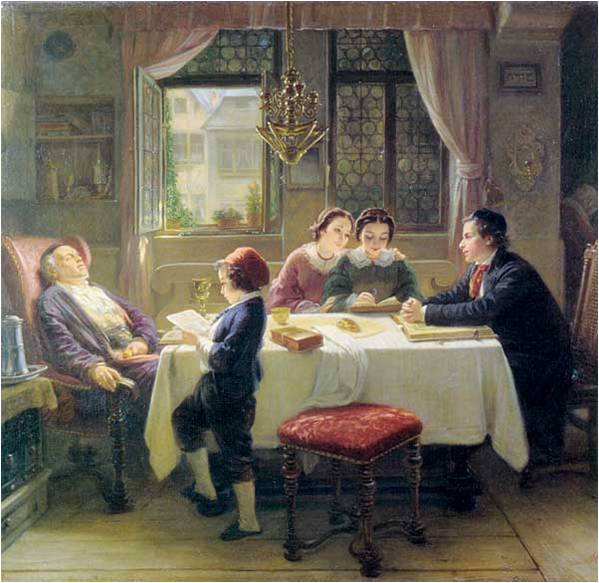
"Sabbath Afternoon" - Moritz Daniel Oppenheim, 1866
Shabbat [Sabbath] is the singing festival par excellence! The family sits around the table for three main meals [Shalosh se'udot] and, in between courses, sings zemirot. There is a wide variety of melodies, ranging from locally traditional tunes to contemporary settings, notably of the popular neo-Hasidic genre. (See list of sites below). For the musically gifted, this is a great opportunity to practice harmonizing: listen to Rahel Jaskow harmonizing with herself on "Day of Rest", or to BenZion Solomon and his family. Hasidim may sit around their rebbe's table [tish] for the third meal, and sing nigunim characteristic of their particular community.
Bat-Ella Birnbaum singing "Shalom Aleichem" to melodies by Debbie Friedman and Shmuel Brazil
Francoise Atlan singing "Shalom Aleichem" to the melody of "Cuando el rey Nimrod"
The traditional melody of "Shalom Aleichem"
In the synagogue, prayers, psalms and piyutim [religious poems] such as An'im zemirot [I shall sing sweet songs] and Adon olam [Master of the universe]) are sung to popular melodies, with the congregation being encouraged to sing along. One of the most popular hymns - Ein k'Elohenu [There is none like our God] - is traditionally sung in Ladino in Sephardic synagogues.
One singing rabbi, Rabbi Shlomo Carlebach, is synonymous with especially melodious services, particularly that of Kabbalat Shabbat [Welcoming Shabbat] with its characteristic psalms and piyutim: Lecha dodi [Come, my beloved] and Yedid nefesh [Beloved of the soul].
Shabbat - as, of course, any other day of the week - is also a time for personal prayers and blessings. Some women's prayers have been collected and set to music, such as La bendicion di madre, a mother's benediction in Ladino which was included in a Sephardic women's prayerbook compiled in Sarajevo. At the end of Shabbat, while the men are at Ma'ariv [the evening prayer], Ashkenazi women gather together and sing prayers of their own, notably Got fun Avrom [God of Abraham] – a multiple-version tkhine [supplication] asking for God's help during the coming week and alluding to the coming of the Messiah.
* * * * *
In this lecture, I concentrate on folk and composed songs about Shabbat rather than on the liturgical nature of the singing mentioned above. The songs can be divided into two main groups: those which describe the Shabbat atmosphere, and those that focus on various aspects of Jewish thought and tradition associated with Shabbat. A great number of Yiddish folksongs reflect the centrality of Shabbat in traditional family and community life. In Sephardic tradition, songs about festivals usually fall into the genre of coplas, which are generally didactic in nature.
Songs about Shabbat
Shabbat is divided into three distinct phases, each with its special atmosphere and characteristics. The song Fraytik bay der nakht [Friday night], describes three family scenes: Friday night, Shabbat morning and Motza'ei Shabbat [Shabbat departure].
(Vira Lozinsky, accompanied by Regina Dricker)
On Shabbat we are given an extra soul [n'shamah y'terah] with which we experience profound rest and contemplation. In the company of the Shabbat Queen and the angels of peace (referred to in the hymn Shalom aleichem), we are imbued with an atmosphere of holiness that is expressed in many songs - for example, Sholem aleykhem [Peace to You], by Sholem Berenstein, or Shabbat hamalkah [Shabbat the Queen], by H. N. Bialik.
The nigun-like melodies hummed by the men on their way back home from the synagogue are recalled in the songs Gut shabes, sung by Belarsky, and Shabes, by Gelbart. Many songs in Yiddish describe the special atmosphere careated by the Shabbat candles – for example, Mayn mames shabes likht [My mother's Shabbat light] or Mamele.
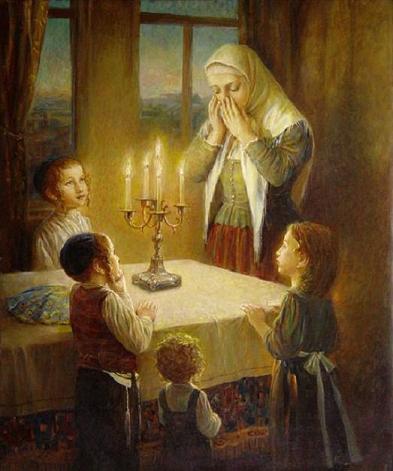
Elena Flerova - "Welcoming the Shabbat"
As mentioned above, the Shabbat day is filled with prayer and singing, at the synagogue and at home. After the third meal, as the extra soul leaves us and we brace for the worries of the coming week, the atmosphere changes from joyous singing to sadness and anxiety. We are more than ever in need of God's providence. The songs Bobenyu / Got fun Avrohom, Shabes beyn hashmoshes [Shabbat at twilight] and Klingen gleker [Bells are chiming] all refer to the Got fun Avrom personal supplication mentioned above. Sephardic communities sing the copla Al Dio Alto [Exalted God], which similarly pleads for God's assistance in dealing with our earthly needs. Following the Havdalah ceremony [separation between the sanctity of Shabbat and the secularity of the rest of the week], we sing (different versions of) Hamavdil, a piyut addressed to Elijah the Prophet, harbinger of the Messiah, and wish each other A gute vokh or Buena semana [a good week]. (For Hebrew readers, here is a very interesting article about the origins and development of Hamavdil, the Yiddish folk and theatre song).
(Two historic recordings of the Motsa'ei Shabbat ceremony: Haim Effendi [1853-1937] and William Robyn [recorded in 1922])
Tradition, history and folklore reflected in Shabbat songs
Think of any Jewish festival and the first thing to come to mind is food! A good example is the song below, Oneg shabes [Shabbat Joy]: Zi brengt dem tsholnt vos iz gor a prakht / Dem kugl, di kishke, mit gut ongefilt ... [She brings the stew in all its splendour, / The pudding, the stuffed derma ...]. There are many more examples in the two pages on Ashkenazi and Sephardic food.
Oneg Shabes [Shabbat Joy], by S. Shmulovitz & S. Rumshinsky
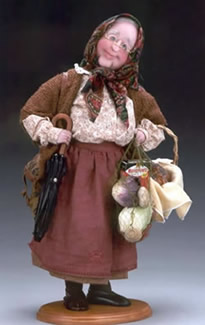
Shabbat is also used as the context in which to present a Jewish point of view. The song A khazndl oyf shabes [A cantor on Shabbat] is about the way different people view a phenomenon (in this case, a cantor) in terms of their own worldly experience. Similarly, although the song Az ikh vel zingen Lecho dodi [When I sing "Come, my beloved"] quotes the famous Shabbat piyut, it is actually about the joy of speaking (using common phrases) in Yiddish.
In Geven amol a yid mit a yidene, Elijah the Prophet is referred to both in his capacity as helper in distress as well as in his role as precursor of the Messiah (see Motsaei Shabbat, above). This song is a moralistic parable ("a mayse gornit tsum lakhn" [not a happy tale]) railing against greed.
Tragedies which occurred on a Shabbat have also been commemorated in song. Fires which ravaged the Jewish quarters inhabited by Sephardic communities from the eighteenth century onwards were attributed to failure to observe Shabbat laws. The people were upbraided in coplas – Ladino songs written with a didactic and moralistic aim – describing the fires and their consequences. An example is Coplas del incendio [Song of the fire], sung by the Jewish community of Rhodes, which contained historical detail pointing to a fire in Constantinople in 1883. Similarly, the song Dia de sabat [The day of Shabbat] describes the great fire of Salonica, which wiped out the Jewish quarter in 1917: "Entendiendo, mancevicos, los pecados de sabat se ensano is parton del mundo." [Understand, young people, the sins on Shabbat incensed the Lord of the world].
The Holocaust song Rivkele di shabesdike refers to the slaughter of 3000 men of the Bialystok ghetto on a Shabbat (July 12th) in 1941; Rivkele is working in the factory, fretting but not yet realizing what has become of her husband.
Modern songs and modern versions of traditional songs
Here is a medley of Shabbat songs by the Revivo Project:
Shabbat is indeed a songfully joyous festival - and it comes around 52 times a year! I'll end with a Shabbat greeting by "singing grandmother" Flory Jagoda: Buen shabat, kun salud i vida. Anyus muchus, kun paz y alegriya [On the Sabbath we wish good health, good life and many years of peace and happiness to the whole family].
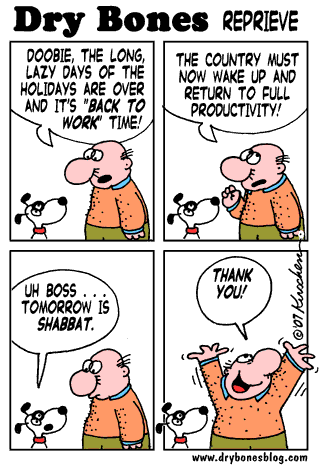
Shabbat Songs Online
Project Zemirot
Shabbat Songs (Aish)
Shabbat Songs (Chabad)
Shabes in Boiberik (New York Yiddish summer camp)
Zemirot Database
References
Hoffman, L. A. (Ed.) Shabbat at Home. (Vy People's Prayer Book, V.7)
Kay, D. Seyder Tkhines: The Forgotten Book of Common Prayer for Jewish Women. JPS, eBook. C.1: Introducing Tkhines.
Lavie, A. (2005). Jewish Women's Prayers Throughout the Ages. Tel-Aviv Miskal[In Hebrew]
